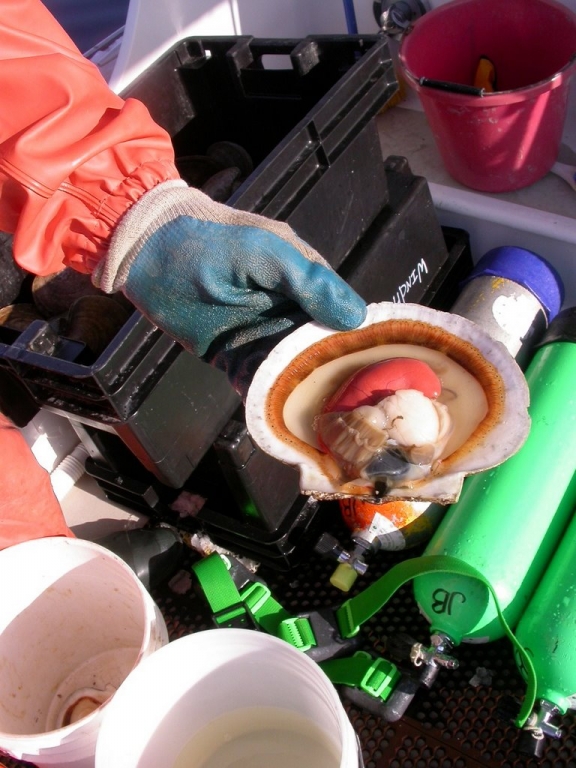The nearshore sea scallop fishery in Maine state waters has fluctuated over the years and declined recently. Scallops still thrive in Cobscook Bay, where harvesters collected them by hand (SCUBA diving, hence the descriptor “diver-caught” or just “diver scallop”) and by dredge. Dredge and trawl are the primary methods of scallop harvesting in federal waters greater than three miles from shore, which occurs year-round.
Maine fishermen deliver fresh sea scallops to local restaurants the same day they are caught. The eye, or adductor muscle, is the edible part of the scallop. The adductor muscle is more developed in the scallop than in oysters and clams because scallops are active swimmers, and use the muscle to open and close their shell, a motion which propels them through the water. Unlike clams, oysters, and other bivalves, scallops cannot hold their shells closed for extended periods and therefore can not survive long out of the water. Consequently, they’re shucked on the boat shortly after being harvested.
The fishing industry cites pros and cons to harvesting scallops by hand, although there is a lack of scientific research on the impacts of dredging versus diving. Diving has less impact on the ocean floor community, but many feel that the large, high-quality scallops harvested by divers are those that contribute a lot to spawning output and keep the population healthy. With experimental closures in many areas of the coast, everyone is anxiously waiting to see how the population does in the near future.
For more information on scallop research being done at UMaine, click here.


